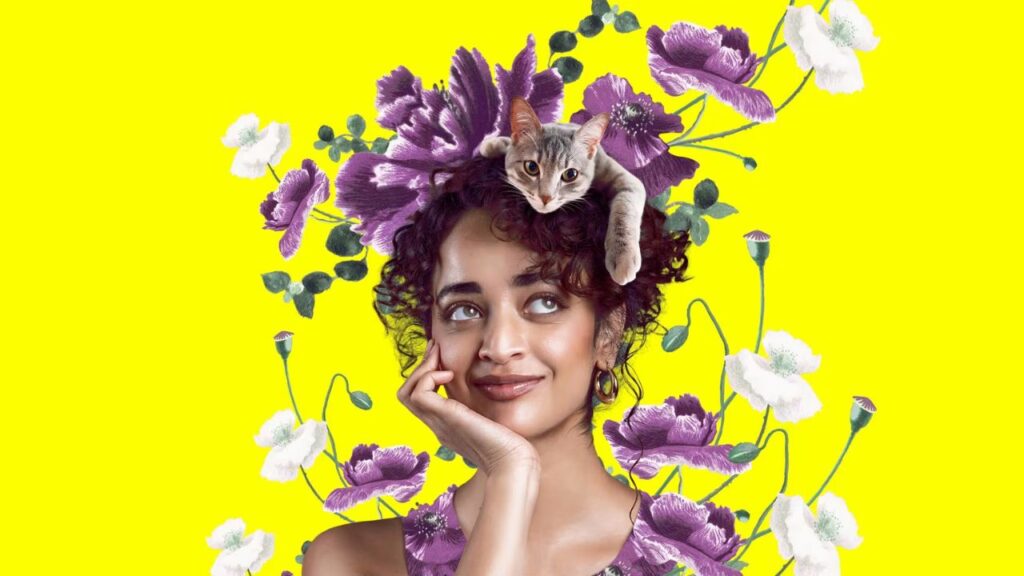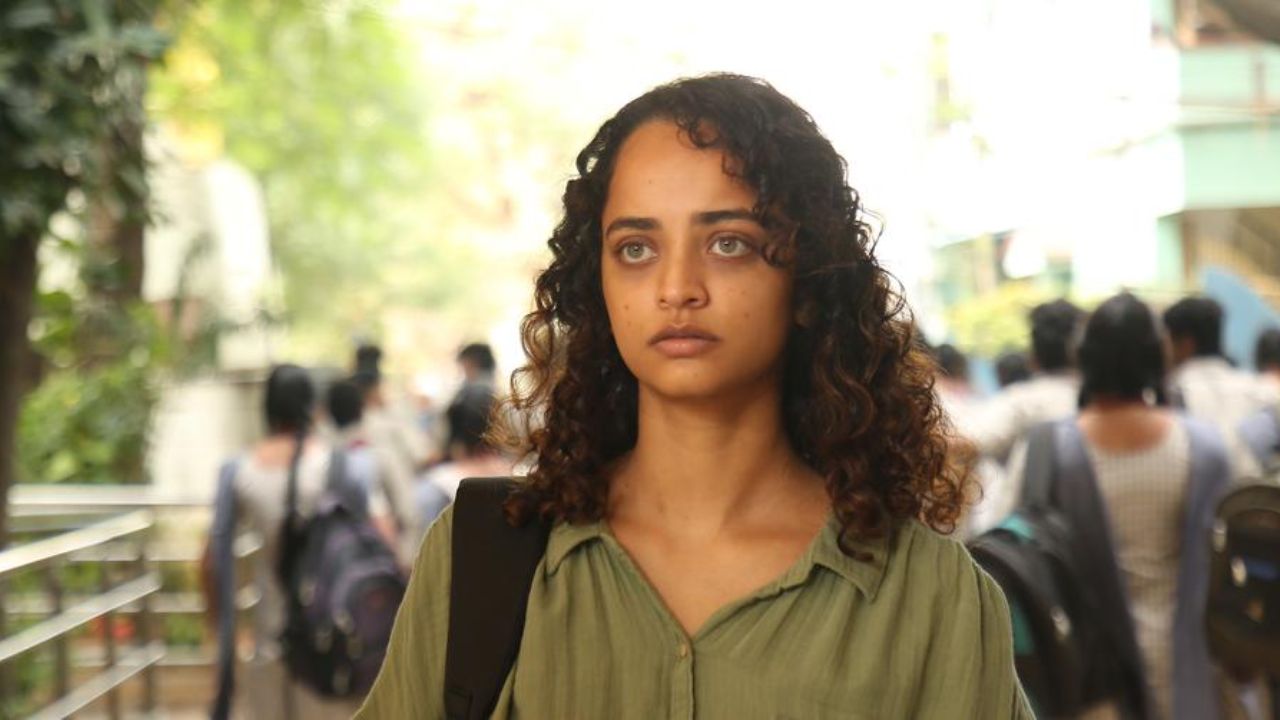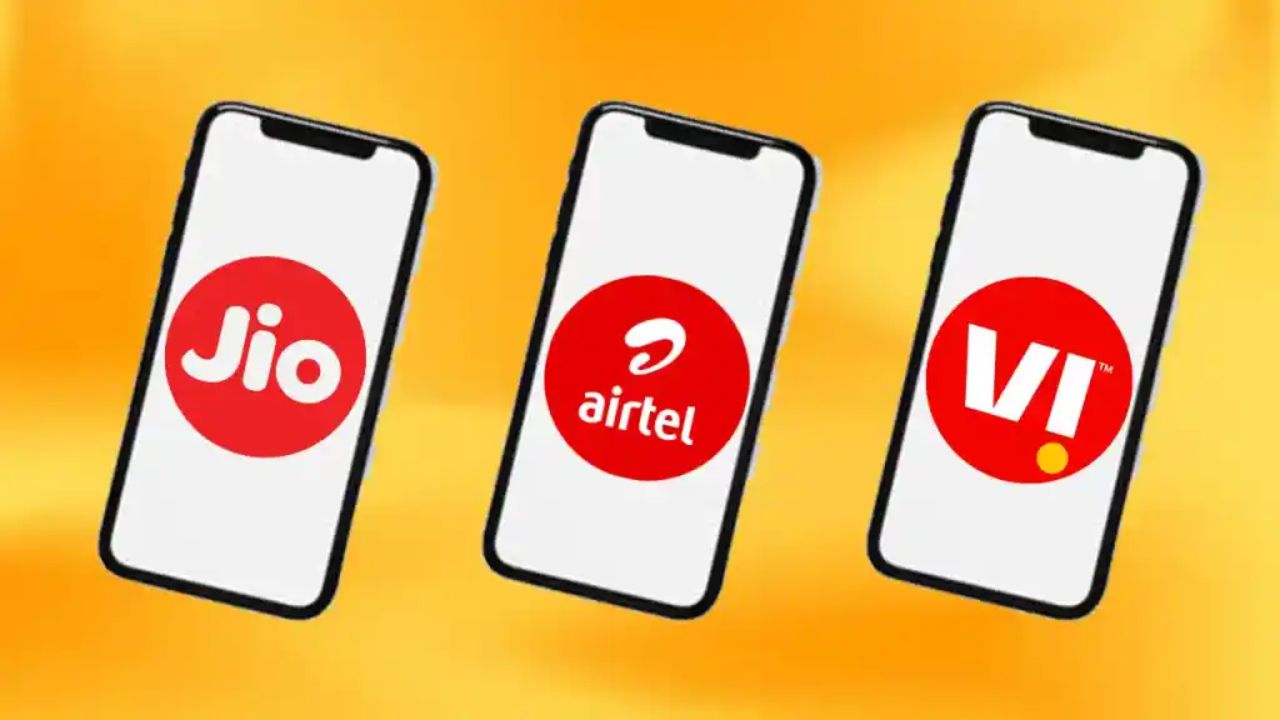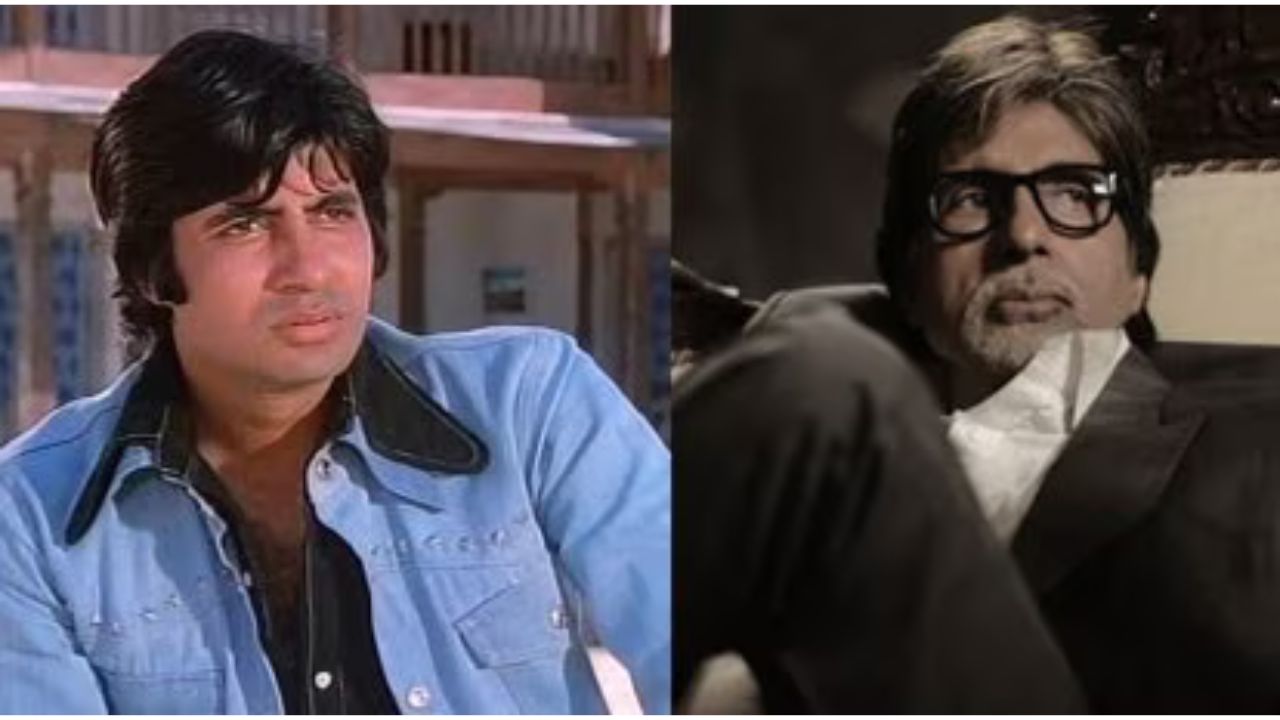Welcome to A Bright Time with your comprehensive coverage of contemporary Tamil cinema and groundbreaking independent films! Today, we bring you an in-depth exploration of one of Indian cinema’s most talked-about and controversial releases of 2025. Breaking news: The controversial Tamil coming-of-age drama Bad Girl, starring Anjali Sivaraman, has made its highly anticipated OTT debut on JioHotstar starting November 4, 2025, making it accessible to a vastly wider audience than its limited theatrical release in September 2025. Directed by debutant filmmaker Varsha Bharath and produced by the powerhouse duo of Vetrimaaran and Anurag Kashyap, Bad Girl represents a landmark moment in Tamil cinema’s evolution toward more honest, unconventional storytelling that prioritizes artistic integrity over commercial conventions. The film, which premiered at the prestigious International Film Festival Rotterdam on February 7, 2025, garnered critical acclaim and international awards including the NETPAC Award at the 54th International Film Festival Rotterdam, despite facing censorship hurdles, community controversy, and disappointing box office performance during its limited theatrical run of just ₹70 lakhs. Available in Tamil, Telugu, Malayalam, and Hindi languages with English subtitles, Bad Girl’s OTT release promises to spark renewed conversations about women’s agency, societal expectations, religious identity, and the unconventional paths young women navigate in pursuit of authentic self-discovery.economictimes+7
Is Bad Girl a Good Movie?
Bad Girl has received widespread critical acclaim and international recognition, positioning it as genuinely excellent cinema that transcends conventional commercial filmmaking, though audience reception has been polarized depending on individual value systems and expectations. Multiple reputable film critics and international festival juries have praised the film for its honest portrayal, innovative storytelling, and fearless approach to taboo subjects, with the International Film Festival Rotterdam featuring it in competition and awarding it the prestigious NETPAC Award, a distinction reserved for outstanding Asian cinema.wikipedia+4
Critical Praise and International Recognition:iffr+2
The International Film Festival Rotterdam described Bad Girl as a “pacy, energetic coming-of-age comedy, driven by Anjali Sivaraman’s exuberant and utterly relatable portrayal, which captures Ramya’s moody oscillations between adolescent idealism and pragmatic resignation”. The Indian Film Festival honored the film by featuring it prominently, describing it as an “exhilarating Tamil coming-of-age comedy by debutant director Varsha Bharath that chronicles Ramya’s spirited journey from high school to adulthood, as she navigates societal expectations, strict parenting, and the delightful chaos of her own mind”. Film critics praised the production’s “fresh, audacious, and even necessary” approach to challenging stereotypes while embracing universal themes of love and self-discovery that resonate across cultural boundaries.indianfilmfestival+1

Anjali Sivaraman’s Standout Performance:ottplay+2
The lead actress, Anjali Sivaraman—known for her roles in Netflix’s Class and the film Cobalt Blue—has been consistently recognized for delivering a “standout performance that captures the character’s complexities with infectious exuberance”. Her portrayal of Ramya, the protagonist navigating societal labeling and personal authenticity, has been described as “utterly relatable” and marked by “infectious exuberance,” with reviewers noting that Sivaraman successfully conveys the character’s “moody oscillations between adolescent idealism and pragmatic resignation”.economictimes+3
Directorial Brilliance of Varsha Bharath:indianexpress+3
Director Varsha Bharath’s feature film debut demonstrates remarkable artistic maturity and thematic courage, with critics noting that the film “smashes patriarchy without bringing a hammer to it,” suggesting a sophisticated narrative approach that doesn’t rely on heavy-handed messaging. In interviews following the release, Varsha shared her artistic philosophy: “I found it very cathartic to write this story. I wasn’t really thinking about all of these things. Of course, having a filmmaker (Vetrimaraan) as my producer really helped. I don’t think anyone else would have encouraged such a personal mode of storytelling”.indianexpress+1
Artistic Integrity Over Commercial Convention:ottplay+1
What distinguishes Bad Girl as an exceptional film is its deliberate rejection of conventional narrative satisfaction, as Varsha explained: “We did not want it to be the kind of film with the girl kissing the boy in the climax and a happy ending. Hence, Bad Girl happened. This is not a conventional chick flick that way.” This artistic decision, though potentially alienating for audiences seeking traditional romantic resolutions, represents precisely the kind of filmmaking integrity that earns international festival recognition and critical respect.indianexpress
Box Office vs. Artistic Success:ottplay+1
While Bad Girl’s theatrical performance was commercially disappointing at ₹70 lakhs during its limited release, its trajectory mirrors many critically acclaimed independent films that find larger audiences through streaming platforms and festival circuits. The financial underperformance of artistically excellent films in theatrical releases often reflects more about distribution strategies and market forces than actual film quality, and Bad Girl’s international awards and critical praise validate its artistic merit despite commercial limitations.ottplay
[Image 1: Anjali Sivaraman as Ramya in a contemplative moment from Bad Girl]
Where Can I Watch Bad Girl 2025?
Bad Girl is now streaming exclusively on JioHotstar starting November 4, 2025, making it conveniently accessible to audiences across India through the platform’s extensive subscriber base. The OTT release represents a significant strategic decision by the film’s producers and Hotstar, recognizing that a substantial portion of Bad Girl’s audience will be discovered through digital streaming platforms rather than theatrical venues.123telugu+3
Primary Streaming Platform and Details:123telugu+2
- Platform: JioHotstar (Jio + Hotstar merged streaming service)
- Release Date: November 4, 2025
- Available Languages: Tamil (original), Telugu, Malayalam, Hindi, with English subtitles
- Subscription Required: JioHotstar subscription (standard, premium tiers)
- Content Rating: This is a coming-of-age drama with mature themes and occasionally suggestive content
- Streaming Quality: Available in HD and 4K depending on subscription tier
- Accessibility: Available across web browsers, Android mobile applications, iOS iPhone/iPad applications, smart TV apps, and connected streaming devices
Why JioHotstar Selected Bad Girl:ottplay+1
The platform’s acquisition of Bad Girl’s streaming rights reflects its commitment to featuring artistically significant independent films that achieve critical acclaim and international recognition. By offering the film in multiple Indian languages, JioHotstar dramatically expands its potential audience beyond Tamil-speaking regions, recognizing that audiences across Telugu, Malayalam, and Hindi-speaking areas will appreciate quality cinema regardless of original language.123telugu+2
Multi-Language Availability Significance:123telugu+1
Bad Girl’s availability in four Indian languages plus English subtitles represents an intelligent localization strategy that acknowledges India’s linguistic diversity. The Telugu version specifically allows that significant regional audience to engage with the film’s themes and narrative without linguistic barriers. Similarly, the Malayalam and Hindi versions ensure that audiences across South and North India can experience Varsha Bharath’s directorial vision in their preferred languages.ottplay+1
Other Potential Platforms (Future Availability):pinkvilla
While currently exclusive to JioHotstar, films frequently expand to additional streaming platforms after initial exclusive windows expire. Audiences should monitor entertainment news platforms for announcements regarding Bad Girl’s potential availability on other streaming services in subsequent months or years.pinkvilla
How to Access JioHotstar:ottplay
- Existing Jio/Hotstar Subscribers: Can access Bad Girl immediately through their existing subscriptions, depending on subscription tier
- New Subscribers: Can register through the JioHotstar website (www.jiohotstar.com) or mobile applications available on iOS and Android
- Family Plans: JioHotstar offers multiple simultaneous streams allowing family members to watch different content simultaneously
- Trial Period: New subscribers may be eligible for promotional trial periods depending on current offerings
- Standard Features: Pause, resume, download (for offline viewing), playback speed adjustment, and multi-device synchronization
[Image 2: Official poster of Bad Girl featuring Anjali Sivaraman]
What Does Being a Bad Girl Mean?
The central thematic question posed by Varsha Bharath’s film transcends superficial character designation, instead exploring the societal labeling mechanism that categorizes women as “bad” for exercising autonomy, questioning conventions, and pursuing authentic self-expression. Bad Girl interrogates how patriarchal social structures weaponize the label “bad girl” against women who refuse conformity and claim agency over their romantic, professional, and personal choices.wikipedia+3
The Societal Construction of “Badness”:wikipedia+2
The film protagonist Ramya is labeled a “bad girl” not for committing any objectively harmful actions, but rather for rejecting societal expectations surrounding traditional marriage, familial obedience, romantic desirability, and religious conformity. Her “badness” consists of questioning why she should prioritize finding the “perfect guy” over personal fulfillment, why she should maintain particular religious practices that feel inauthentic, and why society insists she suppress her desires and authentic self. Through Ramya’s journey from high school through her 30s, the film demonstrates that being labeled “bad” often represents the price women pay for refusing to be confined by patriarchal constraints.wikipedia+1
Challenging Patriarchal Definitions:indianfilmfestival+1
The film’s power derives from its deconstruction of patriarchal labeling systems, suggesting that societal designations of “bad” frequently reflect not objective wrongdoing but rather women’s refusal to conform to restrictive gender expectations. In interviews, director Varsha Bharath emphasized that the film challenges these arbitrary categorizations: “Everybody should be critical of their own surroundings at one point”. This statement encapsulates the film’s central thesis—that examining societal expectations critically, rather than accepting them uncritically, represents not badness but wisdom.indianfilmfestival+1
Women’s Agency and Authentic Self-Discovery:economictimes+2
Bad Girl explores how women who pursue authentic self-discovery and claim agency over their destinies are frequently stigmatized as “bad” by patriarchal structures invested in their conformity. Ramya’s narrative demonstrates that true badness would consist of surrendering personal authenticity in pursuit of external validation and societal approval. The film suggests that women’s most “dangerous” act, from a patriarchal perspective, is claiming the right to shape their own paths.indianexpress+2
Intersectional Dimensions:123telugu+2
The film’s exploration of “badness” becomes further complicated by its engagement with religious identity, caste dynamics, and class considerations, suggesting that the “bad girl” label carries particular weight and consequence for women from certain religious and caste backgrounds. By centering these intersectional dimensions, Bad Girl moves beyond simplistic feminist messaging to explore how multiple systems of oppression converge to police women’s behavior and autonomy.indianexpress+1
Bad Girl’s Plot and Narrative Structure
Bad Girl follows Ramya’s multi-decade journey from high school through her 30s, chronicling her psychological, emotional, and romantic evolution as she navigates the complex terrain between societal expectations and authentic self-discovery. The film deliberately refuses conventional coming-of-age resolutions, instead embracing a more nuanced portrayal of how women’s identity development extends across entire decades rather than concluding with romantic union.wikipedia+2
The Narrative Arc:wikipedia+1
From her school days through college and into early adulthood, Ramya’s primary dream of “finding the perfect guy” is continuously obstructed by societal mores, strict family dynamics, unrequited romantic experiences, and her own psychological complexity. Rather than eventually finding that perfect partner and achieving romantic satisfaction, Ramya confronts the reality that society’s insistence on heterosexual partnership as the ultimate female achievement represents a constraint on her authentic potential. The film’s refusal to deliver conventional romantic resolution—despite pressures to do so—represents its most radical narrative choice.indianexpress+2
Thematic Complexity:123telugu+2
Bad Girl examines how women internalize societal judgments and restrictive expectations, gradually learning to question and resist these internalized constraints. The film’s title itself becomes ironic—by societal standards, Ramya qualifies as “bad” for her independence, romantic choices, religious questioning, and refusal to conform, yet the film invites audiences to recognize that her “badness” represents her greatest strength and most authentic expression.ottplay+2
Cast and Technical Excellence
Anjali Sivaraman’s Transformative Leading Performance:economictimes+2
Anjali Sivaraman delivers a career-defining performance as Ramya, capturing the character’s contradictions, vulnerabilities, insecurities, and growing self-awareness throughout the film’s temporal span. Her work in Netflix’s Class and Cobalt Blue demonstrated her range, but Bad Girl showcases her exceptional ability to convey complex emotional landscapes without relying on melodramatic excess. The actress—daughter of acclaimed playback singer Chitra Iyer—brings authenticity and emotional nuance to what could have become a one-dimensional character in less capable hands.economictimes+2
Supporting Cast Excellence:wikipedia
The ensemble cast includes Shanthipriya as Sundari (Ramya’s mother), Saranya Ravichandran as Selvi, Hridhu Haroon as Nalan, Teejay Arunasalam as Irfan, and Sashank Bommireddipalli as Arjun, each contributing meaningful performances that ground the narrative in relatable human relationships. These supporting characters represent various relationship archetypes—family members enforcing conformity, friends navigating similar pressures, romantic interests embodying different relationship possibilities—creating a comprehensive portrait of the social dynamics Ramya navigates.wikipedia
Technical Excellence:ottplay+1
- Cinematography: Handled by Preetha Jayaraman (ISC), Jagadeesh Ravi, and Prince Anderson, creating a visual language that balances naturalistic everyday moments with carefully composed frames emphasizing emotional statesottplay+1
- Music Composition: Amit Trivedi’s Tamil-language debut score marks a significant moment for the celebrated composer, bringing his acclaimed sensibility to Tamil cinema’s musical landscapeottplay+1
- Editing: Radha Sridhar’s editing shapes the film’s pacing, allowing scenes to breathe while maintaining narrative momentum across decades of storytellingottplay+1

Production Pedigree:ottplay+1
The film’s production under Vetrimaaran’s Grass Root Film Company banner—with co-producer Anurag Kashyap providing institutional support—represents a significant institutional commitment to unconventional storytelling. Notably, Bad Girl marks Vetrimaaran’s final production before shutting down his banner, making it symbolically significant as his legacy project.ottplay+1
[Image 3: A scene from Bad Girl showing the film’s coming-of-age narrative]
Censorship Controversy and Initial Resistance
Bad Girl faced significant censorship hurdles and community backlash before ultimately receiving censor approval following modifications and institutional advocacy. The film’s portrayal of a Brahmin protagonist questioning religious practices and exploring romantic autonomy attracted opposition from certain conservative constituencies who viewed the film as culturally provocative.indianexpress+1
Institutional Support During Controversy:indianexpress
Director Varsha Bharath credited producer Vetrimaaran’s unwavering support during the censorship battle: “I don’t think anybody else would have guided someone on something that was not just made, necessarily, only for entertainment. But also for engagement.” This institutional backing proved crucial in enabling artistic integrity during periods when the film faced external pressure.indianexpress
Box Office Performance and Limited Theatrical Release
Bad Girl’s theatrical run generated just ₹70 lakhs, making it financially unsuccessful despite critical acclaim—a common pattern for artistically significant independent films in commercial theatrical markets. The limited theatrical release reflected distribution challenges facing unconventional films, as mainstream multiplexes often prioritize commercially predictable content over artistic risk-taking. This theatrical underperformance contrasts starkly with international recognition, demonstrating that critical merit and commercial viability frequently diverge in theatrical distribution.ottplay
International Festival Recognition
Bad Girl won the prestigious NETPAC Award at the 54th International Film Festival Rotterdam, receiving international recognition that validated the film’s artistic merit beyond India’s cultural context. The NETPAC (Network for the Promotion of Asian Cinema) award specifically recognizes outstanding Asian films that demonstrate exceptional artistic achievement, making Bad Girl’s win particularly significant. The film’s international circuit success suggests that its thematic exploration of women’s agency, identity negotiation, and resistance to patriarchal constraints resonates across cultural boundaries.iffr+2
The Cultural Significance of Bad Girl
Bad Girl represents a watershed moment in Tamil cinema’s evolution toward more honest, unconventional, and woman-centered storytelling that refuses easy resolutions or patriarchal validation. By centering Ramya’s perspective rather than male validation as the narrative fulcrum, the film decentralizes romantic partnership as the ultimate measure of female achievement. This repositioning—particularly significant within Tamil cinema’s historical tendencies toward idealizing romantic union—carries profound implications for how subsequent stories might conceptualize female protagonists and their narrative arcs.ottplay+1
The film’s engagement with intersectional dimensions of identity—gender, religion, caste, class—within a regional cinematic context creates necessary conversations about how patriarchal constraints function differently across India’s diverse communities. By portraying a Brahmin protagonist questioning religious authenticity, Bad Girl refuses to essentialize religious identity while acknowledging how religious communities’ gendered expectations constrain women’s autonomy.indianexpress
Conclusion: Bad Girl’s Lasting Impact
Bad Girl emerges as genuinely excellent cinema that prioritizes artistic integrity, thematic depth, and authentic character development over commercial palatability. While its theatrical release disappointed commercially at ₹70 lakhs, its journey to international film festival recognition and subsequent OTT availability suggests that Bad Girl will ultimately reach and resonate with substantially larger audiences than its theatrical distribution allowed.iffr+3
For audiences seeking coming-of-age narratives with complexity, sophistication, and refusal of convenient resolution, Bad Girl represents essential contemporary cinema exploring how women navigate identity, agency, and authenticity within patriarchal constraints. Anjali Sivaraman’s standout performance, Varsha Bharath’s assured directorial vision, and the technical excellence throughout make Bad Girl a must-watch for anyone interested in progressive Indian cinema. Now accessible through JioHotstar’s multi-language streaming platform, Bad Girl promises renewed conversations about women’s autonomy, societal expectations, and the continuing struggle for authentic self-discovery.pinkvilla+6
For more interesting News, Education, Technology, Health, Food, Sports, Job, and Business updates, visit us at https://abrighttime.com/








